Click to: Share, Shop, & Much More!
THE KOSHER
DIET
A Kosher diet allows foods that comply with
the dietary standards of Jewish law. While the
diet is based on Jewish religious tradition,
many people are adopting a Kosher diet
because Kosher foods can be a healthy
choice. Remember, always consult your doctor
before making any changes to your diet.


The Kosher Definition
The English definition of Kosher originates from the Hebrew root “kashér” meaning proper, pure, or
proper for consumption. Different Jewish communities follow more or less the same rules of Kosher
eating according to their preference. People who eat a Kosher diet strictly for their health typically
follow as many or as few of the rules as they want.
What is Kosher food?
Kosher foods largely consist of meat, dairy, and pareve. The latter refers to foods prepared without
meat, milk, or derivatives of either so you can eat them with both meat and dairy dishes. Jewish law
forbids eating milk and meat together or consuming dairy foods within a specified period after
eating meat. Pareve includes food that grows from the ground, such as fruits, vegetables, and grains.
It also includes fish, eggs, seasoning like salt, and water.
While fish is traditionally not eaten with meat, people who follow a Kosher diet may include fish
regularly in their diet. Fish is a part of healthy meal planning because of its content of omega-3 fatty
acids and low saturated fat content.
Avocados also fit into Kosher diets. They are a good source of fiber and contribute 6 g good fats, 4 g
of carbs, and contribute nearly 20 vitamins, minerals, and phytonutrients.



The Kosher Food List
Within the three categories of Kosher food, only certain foods are allowed. They include:
KOSHER MEAT
- Meat from cows, goats, oxen, sheep, lambs, and deer
- Meat cuts from the forequarters of Kosher ruminant animals
- Some domesticated fowl, such as chicken and turkey
KOSHER FRUIT & VEGETABLES
- Any fruit or vegetable that is in its natural form
- Fruits and vegetables found to be free of insects or larvae
- Fruits and vegetables processed with equipment designated only for processing these foods, not dairy or meat
Pareve Food
Hovering the circles to see some examples -

Eggs

Grains

Fish

Fruits and
Vegetables

Pasta

Unprocessed
juice

Coffee
and Tea
Pareve foods play a large role in creating Kosher meals. Avocados are especially easy
to use in Kosher recipes. This tasty fruit adds nutrient-density to all types of Kosher meals
without any worry about mixing the wrong things.

Understanding Kosher Symbols
Kosher symbols make it easy to buy Kosher foods at the store. You won’t always see the same Kosher
symbol on foods, depending on what kind of food it is. Learning these symbols will help you buy food
to prepare Kosher meals with almost no effort.
Below are some of the most common symbols you should look for if you are
following a Kosher diet -
-
 Certified as Kosher
Certified as Kosher
-
 Certified as Kosher
Certified as Kosher
-
 The letter “D” or the word “Dairy” after the Kosher symbol means the food
The letter “D” or the word “Dairy” after the Kosher symbol means the food
contains dairy. -
 Symbolizes that the product is pareve and contains no meat or dairy.
Symbolizes that the product is pareve and contains no meat or dairy.

Kosher Meal Ideas
People who eat Kosher meals eat Kosher ingredients and do not mix meat and dairy.
Always consult with you doctor before making changes to your diet. Below are some
Kosher meal ideas that include avocados -

 KOSHER BREAKFAST
KOSHER BREAKFAST
A Kosher breakfast doesn’t contain pork or bacon. Instead, you might fix a whole grain bagel with cream cheese, sliced tomato, and a slice of avocado.

 KOSHER LUNCH
KOSHER LUNCH
Favorite Kosher lunch ideas for busy adults and kids include bagged Kosher salads. Choose to add either Kosher meat or cheese and add avocado for nutrition and taste. Some healthy Kosher lunch ideas include baked Kosher chicken with roasted potatoes or smoked Kosher salmon with avocado filling.

 KOSHER DINNER
KOSHER DINNER
A Kosher dinner can contain Kosher beef. Kosher burgers topped with avocado can make a delicious dinner. Make sure to ensure the beef and hamburger buns you’ve selected are truly Kosher before you start preparing your burgers. As mentioned, Kosher meals don’t mix meat and dairy, so don’t forget to leave the cheese off your burgers.
Common Questions About Kosher Diet
1WHAT IS KOSHER DAIRY?
Kosher dairy includes milk, cheese, butter, and yogurt that comes from a Kosher animal. People who follow Kosher diets can’t mix dairy with any meat or meat-based derivatives, which are often found in standard cheese products.
2WHAT DOES KOSHER CERTIFICATION MEAN?
Kosher Certification assures consumers that a food and the production methods used to prepare it adhere to all Kosher law requirements.
3WHAT IS THE U SYMBOL ON FOOD?
The U symbol you might find on certain food packages means that the food was processed according to Jewish dietary laws.
4ARE AVOCADOS KOSHER FOR PASSOVER?
Yes, all fruits and vegetables are Kosher for Passover (including the Avocado).







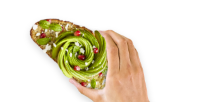





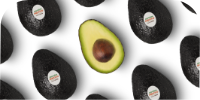
















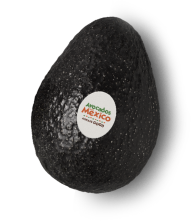





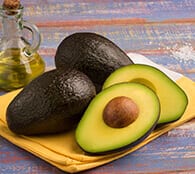


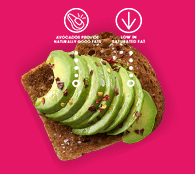
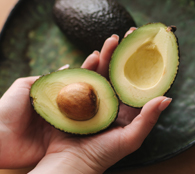

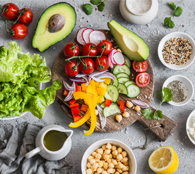
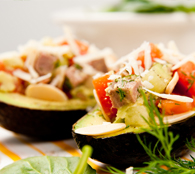
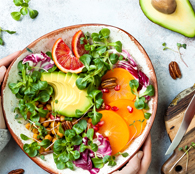
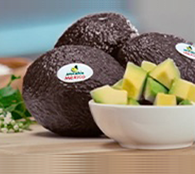

 KOSHER DESSERT
KOSHER DESSERT




